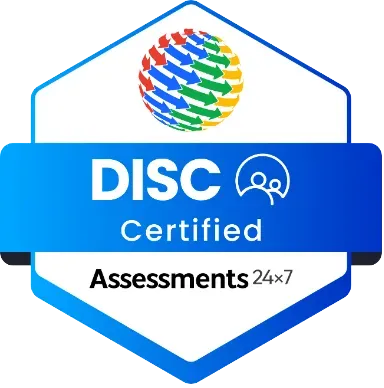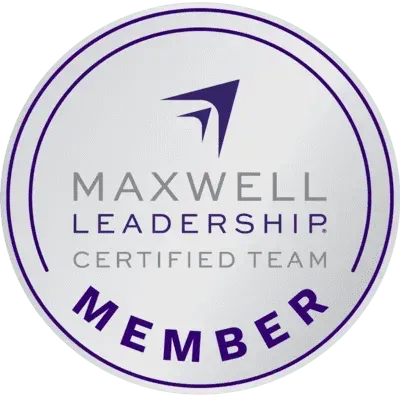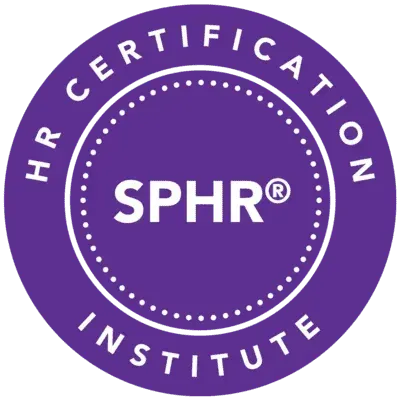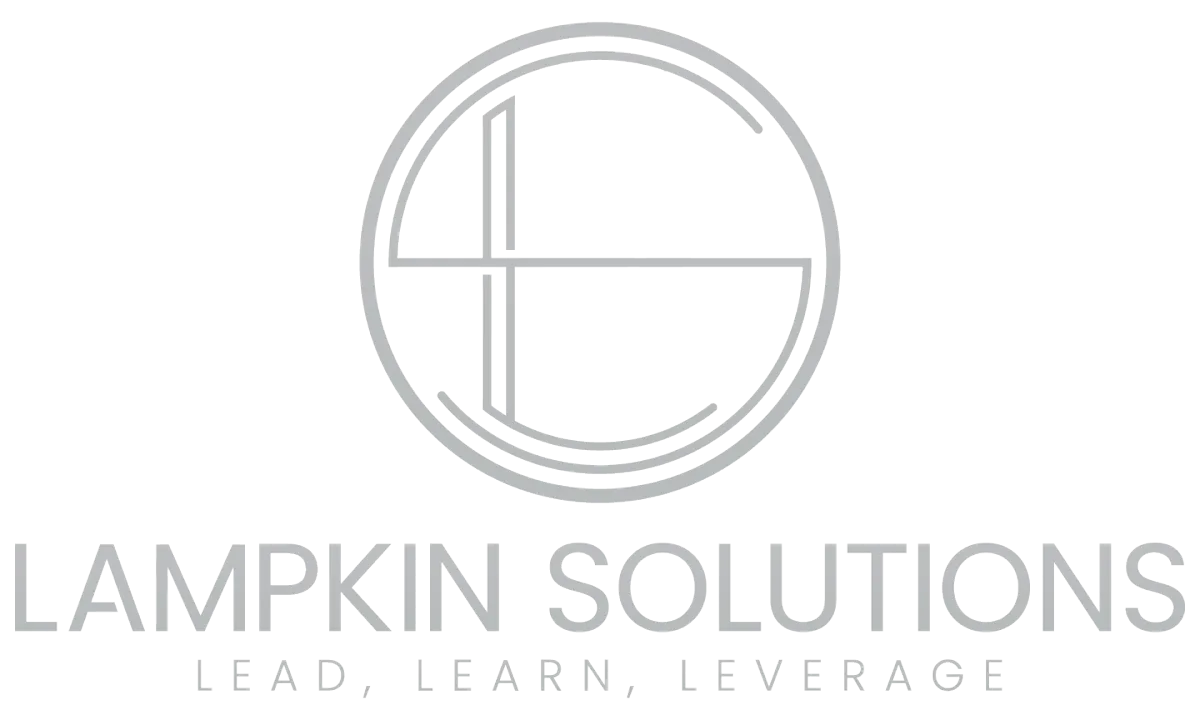Strategic HR & Leadership Solutions
Optimize Workforce, Ensure Compliance, Elevate Leadership.
At Lampkin Solutions, we specialize in Strategic Workforce Planning, HR Compliance, Leadership Development, and Executive Consulting. With expert guidance from Dr. Bobby Lampkin Jr., our tailored solutions empower your organization to enhance productivity, strengthen leadership, and drive sustainable growth. Whether you're looking to optimize HR functions, develop leadership capabilities, or ensure compliance, we're here to help you achieve success.
Providing Business Services to Help Organizations Make Better Decisions.
At Lampkin Solutions, we are dedicated to empowering organizations to make better decisions and achieve unprecedented growth. Led by Dr. Bobby Lampkin Jr., a Senior Professional in Human Resources (SPHR) with over 15 years of Business and Leadership Coaching and Consulting experience, our team brings a wealth of expertise to every client engagement. As a John Maxwell Leadership Certified Speaker, Trainer, and Coach, Dr. Lampkin infuses our services with proven leadership principles that drive organizational success.
We specialize in a comprehensive suite of Business Services designed to address the multifaceted challenges of modern business management. Our core offerings include Human Resource (HR) Consulting, where we transform your HR function into a strategic asset, enhancing employee engagement and ensuring compliance. We also excel in Employee Training and Development, crafting tailored programs that elevate your workforce's skills and productivity.
Leadership Coaching is at the heart of what we do. Whether you're grappling with employee management issues, seeking to develop strong leadership skills, or aiming to create effective training programs, Lampkin Solutions provides the expertise and guidance you need. Our goal is to alleviate your business concerns, streamline your operations, and propel your organization toward optimal performance and sustainable success.
Business Growth Consulting
Comprehensive Leadership Coaching
Human Resource Strategy
Employee Workshops
Tailored Training Programs
Change Management
BUSINESS SERVICES
Our awesome services for
valued customers

Human Resource Consulting
Are you struggling with complex HR issues, employee management, or talent optimization? Look no further! Lampkin Solutions, an expert in Human Resource Consulting, has the perfect blend of solutions tailored to suit your business needs.

Leadership Coaching
Inquire about our Learn Today, Apply Today Coaching Philosophy! These sessions are exclusively designed for individuals, offering personalized guidance to enhance their leadership abilities and address specific challenges.

Workshops
Are you looking to enhance team collaboration, improve skillsets, and boost productivity? Revolutionize Your Team with Lampkin Solutions’ Dynamic Employee Workshops!

Business Consulting and Training
Are you ready to take your business to the next level? Lampkin Solutions, a leader in business consulting, provides comprehensive, tailor-made strategies designed to ignite growth and fuel your success.
Why Choose Us
Leaders in HR Business Consulting and Leadership Coaching.
Imagine a future where your organization thrives, led by executives who inspire, innovate, and drive unprecedented success. You're about to embark on a transformative journey with our Leadership Coaching, custom-designed to unlock the full potential of your leadership team.
As you visualize your managers confidently navigating challenges, fostering collaboration, and igniting passion in their teams, you'll feel the energy of a workforce aligned and motivated towards shared goals. Aren't you curious to discover how quickly your business can reach new heights when your leaders are equipped with cutting-edge skills and insights? Let's paint this picture of success together - your journey to extraordinary leadership begins now.


100% Client
Satisfactions

Quality & Experted
Consultants

Strong & Solid
Partnerships

Established
Business
Why Choose Us
What’s Clients Says
About Us

Organizational Strategy Revamp by Lampkin Solutions was a game-changer! Their expert team effectively realigned our business objectives, leading to significant growth and productivity improvement. The new strategy is clear, feasible, and has energized our entire team. Lampkin Solutions delivers remarkable results, exceeding expectations!

Theresa Webb
Web Developer

Incredible experience with Lampkin Solutions’ Executive Leadership Coaching! Their tailored approach invigorated my leadership capabilities, honing my strategic vision and decision-making. They fostered an environment for growth that was supportive, insightful, and transformative. I am now a confident, results-driven leader. Highly recommend their services for impactful leadership development!

Jacob McCoy
Financial Manager

Lampkin Solutions’ HR Consultation is second to none. Their expertise helped us optimize our HR practices, resulting in a happier, more productive workforce. Their advice was practical, effective, and personalized to our company’s needs. Highly recommend for any business seeking progressive HR solutions

Robert Simmons
Chief Strategist
Our Latest Blog

Effective Feedback: How to Guide
Effective Feedback: How to Guide
Ever found yourself tongue-tied when trying to give feedback? It’s an art. Not just sharing thoughts, but truly impacting growth. Effective feedback isn’t advice or grades. It’s goal-related insights. Imagine a coach guiding an athlete—they focus on specific, measurable actions.
But here’s a pitfall: feedback can go wrong. Common feedback mistakes include being vague or too harsh. Timing matters too; it’s key for reflection.
Creating a culture of giving effective feedback boosts motivation. It’s not about pointing fingers. Instead, it’s about guiding improvement. So, how do you give feedback without overwhelming it? Tailor it to individual needs. Avoid common feedback traps. This guide will show you how.
Key Takeaways
Effective feedback involves goal-related insights, not just advice or grades.
Avoid vague or harsh feedback; timing is crucial for reflection.
Create a culture of giving effective feedback to boost motivation.
Tailor feedback to individual needs and avoid overwhelming the recipient.
Learn to avoid common feedback traps for better communication and growth.
Understanding the Basics of Feedback
Grasping the essence of feedback involves more than just pointing out what’s wrong. Effective feedback serves as a compass, guiding improvement through clear, goal-oriented suggestions. Imagine trying to improve without a roadmap. It’s akin to wandering in a forest without a compass. This is where the power of specific, actionable feedback shines. It provides a way forward, cutting through the noise and offering clarity.
Timing is everything. Feedback delivered too late can feel like receiving yesterday’s news. But blurt it out too soon, and it can catch someone off guard. Striking the right balance is key.
Avoid the pitfall of being too vague or judgmental. Instead, focus on the behavior and its impact. Picture a coach giving feedback; they don’t say “You were bad,” but rather, “Try adjusting your stance for better balance.”
Creating an environment where feedback is as regular as morning coffee can transform a team. Harvard Business Review emphasizes that criticism, when mishandled, can stifle change rather than encourage it. Here’s their perspective: [When You Criticize Someone, You] (https://hbr.org/2013/12/when-you-criticize-someone-you-make-it-harder-for-them-to-change).

Key Characteristics of Impactful Feedback
The standout features of feedback that truly make an impact stem from its alignment with clear goals and actionable guidance. Imagine you’re planting a garden—each suggestion is a seed, needing the right conditions to grow. When you provide feedback, it should resonate like a well-tuned instrument, helping the recipient focus on achievable targets.
Engage the listener by painting a vivid picture; instead of saying “Improve your performance,” mention how their attention to detail increased project accuracy by 20%. Offering forward-looking advice sets a path for improvement. Giving effective feedback is akin to pointing out a beacon in foggy waters, ensuring that the person understands not just what to do, but how to do it better next time.
Giving feedback isn’t just about pointing out flaws. Balance is crucial, especially when you need to give negative feedback. Highlight what went well before diving into areas needing improvement. It’s like a spoonful of sugar helping the medicine go… well, you know the rest.
Goal-Oriented Approach
Approaching goals with precision requires aligning feedback with targeted objectives. In sports, for example, a coach might note an athlete’s footwork improvement, directly linking it to their goal of enhanced performance. This connection transforms feedback into a roadmap, guiding the recipient toward success.
An athlete receiving feedback on footwork isn’t just hearing “good job” but understanding how those quick steps bring them closer to their target. Specificity makes all the difference. When you give feedback, it’s like providing a GPS for skills—pointing out the exact route needed.
In educational settings, teachers often provide feedback that highlights how a student’s essay meets key criteria, making the path to improvement clearer. However, negative feedback should be handled with care, focusing on constructive insights rather than criticisms.
Avoiding common feedback pitfalls is like dodging potholes on a highway—smooth delivery ensures the recipient stays on track. Timing is crucial; provide feedback when it can truly impact progress. When you give effective feedback, you’re not just offering words; you’re mapping a journey toward improvement.

Providing Clear and Specific Examples
When offering examples, clarity and precision are key. Imagine telling an artist, “Your shading adds depth,” instead of a vague “Nice drawing.” This transforms feedback into a clear roadmap for improvement. When you provide feedback, think of it as painting a picture of what success looks like. It’s not about decorating with fancy words but providing a solid frame for understanding.
When we give negative feedback, it’s crucial to focus on actions, not personality. Imagine saying, “The report could be more concise,” rather than “You’re always too wordy.” This approach not only cushions the blow but directs the path forward. It’s like pointing to the hurdles, not the runner’s shoes.
Avoid common feedback mistakes by being specific. Instead of “You did well,” mention, “Your introduction captured the reader’s interest immediately.” This way, you highlight impact feedback. Remember, when you give feedback, you’re not just critiquing; you’re sculpting a masterpiece. Now, isn’t that a more rewarding challenge?
Actionable and Forward-Looking Suggestions
When pondering actionable insights for feedback, consider these future-focused approaches. First, giving feedback should be concise and clear. Instead of vague pointers, highlight specific behaviors that need attention. Like a GPS, guide the recipient toward improvement.
Timing is everything. Deliver feedback when it can be smoothly digested and applied.
Balance is key. Mix positive notes with the corrective. A spoonful of sugar helps the medicine go, right?
Turn negative feedback into a constructive dialogue. Engage the recipient in crafting solutions together.
Avoid common feedback mistakes by focusing on the action, not the person. This keeps discussions productive.
Encourage self-reflection. Ask questions that lead them to their own insights, boosting ownership of their growth.
Follow up. Ensure the feedback has been understood and applied. This reinforces its value.
Adapt your approach. Not everyone responds to feedback the same way; be flexible in your delivery.
Finally, be a mirror, reflecting achievements and areas for growth, balancing between impact feedback and supportive guidance.
Actionable and Forward-Looking Suggestions
Common Mistakes to Avoid in Feedback
Avoiding common blunders in feedback is crucial. Timing is everything. Never give feedback in the heat of the moment; wait until everyone’s had a chance to cool off. This allows for genuine reflection, not knee-jerk reactions.
Beware of vagueness. Saying “Great job” is nice, but hardly helpful. Instead, provide feedback that specifies what was done well. Like telling Tim his presentation was engaging because he used relatable stories.
Judgmental tones can also derail your message. People shut off when they feel attacked. Imagine telling Lisa her report is “a disaster”; she’s more likely to defend than learn. Instead, suggest improvements while acknowledging effort.
Also, don’t skip the follow-up. Confirm that your feedback was understood and applied. This isn’t just about ticking boxes; it’s about real growth.
And for the love of all things constructive, don’t pile on too much at once. Overloading someone with feedback can be like drinking from a fire hose. Prioritize the key areas to address first.
In summary, when you give feedback, aim for clarity, timing, and empathy.
Timing: When and How to Deliver
Delivering feedback effectively isn’t just about what you say, but when you say it. Timing plays a huge role in the reception of your message. Think of it like telling a joke; timing can make or break the impact. Waiting too long after an event can dilute your message. However, rushing in might catch someone off guard. Aim for a sweet spot where the moment is fresh, but emotions have cooled.
When giving feedback, especially if negative, consider the environment. A private setting often works best for sensitive topics. As for how to approach it, clarity and empathy are your allies. Be specific about the behavior, not the person. If your colleague misses a deadline, focus on the deadline, not their character.
A surprising study discovered that humor can ease the tension when you give negative feedback. It lightens the mood, just don’t overdo it. It’s a delicate dance, but when done right, your input will have a lasting, positive impact. For more on creating engaging discussions, one might check out Slido’s platform.
Timing: When and How to Deliver
Building a Culture of Continuous Feedback
Cultivating an environment where feedback flows freely is like planting seeds for growth. Every member should feel empowered to share insights, knowing their voice matters. Encouraging open dialogues can turn feedback sessions into a two-way street. With giving feedback, both positive and negative, clarity reigns supreme. Imagine a space where feedback isn’t feared but embraced like a warm hug—inviting growth and learning.
Giving effective feedback involves more than just pointing out mistakes. It’s about offering a roadmap for improvement. Yet, beware of common feedback mistakes such as vagueness or judgment. They can derail progress faster than a flat tire on a road trip.
When addressing negative feedback, try sandwiching it between positives. This technique softens the blow without sugarcoating reality. Aim for a balance—make sure your feedback packs a punch, yet feels like a cushion.
Remember, feedback should spark a transformation, not a shutdown. Keep the conversation light, relatable, and solution-focused. This approach ensures your feedback leaves a positive impact long after the discussion ends.
Techniques for Giving Constructive Criticism
Strategies for delivering constructive criticism are crucial in ensuring feedback lands effectively. Begin by understanding the recipient’s context. Adjust your approach to resonate with their experiences and needs. If someone is new, be more gentle. If they’re seasoned, challenge them a bit more. Giving feedback is like seasoning a dish; too much or too little can ruin it.
Consider using the “sandwich” method—start with positive comments, insert the negative feedback, and close with encouragement. This helps soften the impact. Try to remain neutral and focus on behaviors, not personalities, to prevent defensiveness.
Timing matters. Deliver feedback shortly after the event, but allow enough time for emotions to settle. This ensures the feedback remains relevant without causing unnecessary tension.
Engage in a dialogue. Encourage the recipient to share their perspective. This fosters mutual understanding and collaboration, making feedback a two-way street.
Lastly, always offer actionable insights. Without them, feedback is like a compass without a needle—it points nowhere.
Tailoring Feedback to Individual Needs
Adjusting responses based on individual needs can significantly enhance the impact feedback has on growth. By catering to unique characteristics and preferences, you ensure that feedback is more relatable and actionable. Think about a time when someone critiqued your cooking. If they knew you, they’d probably suggest seasoning adjustments fitting your taste buds. This personal touch in feedback leads to better understanding and less defensiveness.
The timing of feedback matters just as much as its content. Delivering it when the person is most receptive can make a world of difference. Recall the last time you received an unexpected critique at a family gathering—awkward, right? Timing is everything!
Incorporating the individual’s goals into the conversation transforms feedback into a collaborative effort. Rather than a one-sided critique, it becomes a dialogue. Harvard Business Review discusses how personalization boosts change effectiveness here. Through shared understanding, feedback becomes a tool for growth rather than a source of stress. With this approach, feedback becomes less of a chore and more of an inspiring strategy for improvement.
Conclusion
Effective feedback acts as a bridge between current performance and future potential. By offering insights that are clear and goal-oriented, it illuminates the path for improvement. This form of communication, when done right, transforms routine interactions into opportunities for growth.
Creating a feedback-rich environment takes effort but pays dividends. It fosters continuous learning and inspires confidence. Remember, it’s not just about pointing out what’s wrong; it’s about paving the way forward. So, be mindful of timing, context, and individual needs. With these elements aligned, feedback becomes a powerful tool, not just a tick-box exercise. Embrace the art of feedback, and watch as it transforms your interactions and leads to meaningful change.
About Author
Dr. Bobby Lampkin Jr, SPHR, founder of Lampkin Solutions HR Business and Leadership Consulting, is your go-to expert for transforming HR challenges into competitive advantages. With over 20 years of experience and a track record of boosting organizational performance, Dr. Lampkin offers tailored strategies that drive employee engagement and business growth. Ready to revolutionize your HR approach? Connect with Dr. Lampkin today for a consultation that could redefine your company’s future.
Contact Us!
Ready to elevate your business? Schedule a meeting with Lampkin Solutions for expert guidance, tailored strategies, and transformative growth.
Office Location:
Houston, Texas
Talk with Support:
(832) 774-0899
Opening Hours
Mon-Fri: 8:00am - 5:00pm



Let's Start Something Great!

Call Us 24/7
(832) 774-0899

Lampkin Solutions provides comprehensive Business Consulting and Training services, offering tailor-made strategies to optimize your operations and training programs that enhance workforce capabilities.
© 2023 Lampkin Solutions.

